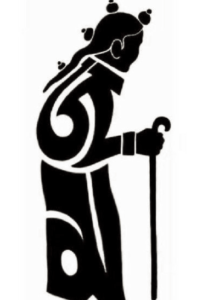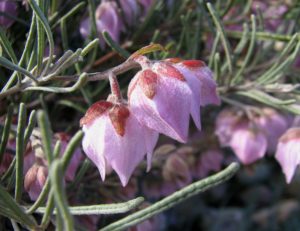I owe you an explanation.
A year ago, I posted a blog announcing I was going to die soon.
A year later the blogs still roll out, and so do I.
The tumours are still there, though shrunk, in the lungs and elsewhere, and they will probably consume me. But no-one knows when. A year ago, the doctors told me: no more operations, no more radiation or chemo, all treatment options are exhausted, nothing more to be done. You have months.
The sudden bout of coughing blood, which triggered the CT-scan that resulted in that final diagnosis was a shock, not a surprise. All along, through the several operations, bouts of radiation and chemo, I had been told there is a high likelihood of recurrence. Even when the surgeons, after a 12-hour operation, triumphantly announced: “You’re cured”, my immediate reaction was to say: “You can’t say that.” So the spread of the tumours, from skin, to salivary glands, to nerves, to lymph glands and into the lungs was half expected.
In some ways, I was glad to be definitively off the medical treadmill, a clear message that neither I nor the doctors had any further hopes. I signed on to palliative care, and tried to ready myself for the long journey into the next life. That included saying good bye to everyone, including online in that blog.
For three months, I wasted away, all my energy consumed by the voracious tumours. I ate a lot, but the tumours ate it all, leaving me grey, tired, rudderless, but somehow determined to face dying and what happens beyond.
There was a token cycle or two of chemo, as the doctors said: “to give you a little more time.” No more talk of remission, just, at most, slowing the tumours a little. It didn’t work.
What made the difference was immunotherapy, and here I am a year later, not only able to tell the tale, but with energy refound. That’s why the blogs continue.
Technically I am an HNSCC, head and neck squamous cell carcinoma patient, one of only a few thousand worldwide to get the new immunotherapy infusion that simply reminds the immune system how to recognise cancer cells and destroy them. It works the way sowa rigpa works, not by attacking, but by strengthening.
Is this luck? Is it the blessings of the Buddhas and bodhisattvas? It’s all that. It’s the biggest advance in cancer treatment in a century, and it became available at just the moment it made all the difference between life and death for one individual, me.
My wanderings through the many layers of cancer world have had such junctures before; this is only the most dramatic. Many times, causes and conditions have combined, producing moments to be seized, decisions to be made, conducive to life. Again and again such moments arise, to be recognised and acted on. I am blessed, surrounded by enlightened mind and its uncountable legacies, and potentials, for me to awaken to if I have my wits about me. I am blessed.
 Now, a year on, the miraculous is humdrum, a fortnightly train trip to the city, to have that clear liquid pumped into my veins, no pain, no drama of any sort, just the routine of nurses administering drips, sitting alongside those getting chemo that same way. It might be done, for administrative convenience, in a chemo setting, but what a difference, between calculated poisoning of all fast growing cells, benign and malign alike, compared with this strengthener of the body’s innate capacity to recognise and deal with cells that don’t belong.
Now, a year on, the miraculous is humdrum, a fortnightly train trip to the city, to have that clear liquid pumped into my veins, no pain, no drama of any sort, just the routine of nurses administering drips, sitting alongside those getting chemo that same way. It might be done, for administrative convenience, in a chemo setting, but what a difference, between calculated poisoning of all fast growing cells, benign and malign alike, compared with this strengthener of the body’s innate capacity to recognise and deal with cells that don’t belong.
Now I look back on the three months when I was definitely dying, before the immunotherapy started. Being able to say my goodbyes, tidying my affairs, turning to face death and what occurs beyond, was a privilege few get. We all know we must die, but it is out of sight, over the horizon, until it suddenly happens.
I got to do a three month rehearsal, now the force of habit has locked back into place, and death again seems far. Only it’s not, those three months did remind me that trying to stay in control is a delusion, that it can’t be fixed, our entire civilizational obsession with calculating and managing risks only multiplies threat perceptions, which proliferate endlessly. I’m changed, and not much changed by those three months approaching death’s door. Dzongsar Khyentse Rinpoche once instructed someone, instead of the usual ngondro process for softening a rigidly habitual mind, to chant, one million times: “It can’t be fixed.”
Living on means living with the 24/7 consequences of radiation damage, a constantly stiffening neck and shoulder, as muscles tighten into a fibrotic clutching of the neck. The removal of salivary and lymph glands, the operation that stripped half my face of all its nerves, leaves me with dribbling mouth, swollen cheek and sagging eyelid, collateral damage of surgical skill that did save my life, for long enough to be still around when immunotherapy arrived. Managing the complications of a dry mouth, dry and irritated eye, plus the many odd side effects of a recharged immune system in combat inside my lungs, is tricky. It’s all too easy to make it a medical treadmill. I see dentists, plastic surgeons, ophthalmologists, dermatologists, physiotherapists, osteopaths, lymphoedema specialists, masseurs, rehabilitation gym coaches regularly, as well as the oncologists, CT imaging folks and the chemo infusion nurses. In the public health system of a rich country nearly all of that is without monetary cost, an extraordinary blessing.
Anyone in my circumstances in India or China could perhaps get such treatment, if they were millionaires. I would have been dead two years by now, if in Tibet. If I was American, no problem, immunotherapy is there, but I would have long mortgaged my house to pay for it, and be exhausted, at every step, arguing with health insurers refusing to pay for treatments of unproven effectiveness.
Managing all of this can so readily become full-time, blotting out the eastern sun of awakening to the bigger picture. It is my default setting to fixate on all those yoga stretches and trigger points and dry eye ointments, routines within routines, making myself a suitable case of micro-management, a miniature of the global obsession with controlling risks.
I remind myself you can’t face death like that, it will come, ready or not, control freak or not. You have to be able to let go, to remain focussed and not distracted by minutiae, awake to rediscovering the nature of mind, not compulsively swallowed up by its momentary contents. The tumours are still there, one year on. Immunotherapy can have dramatic unintended consequences, including auto-immune attacks on healthy organs by an overstimulated immune system. Courtesy of the immunotherapy manufacturer, I wear a wristband alerting hospital emergency departments that if I arrive unconscious on an ambulance trolley, it could be something they don’t recognise, immunotherapy anaphylaxis. My life is on a thread, as it is for us all, only I have the blessing of frequent reminders.
This affects my writing. It motivates me to continue delving into China’s plans for Tibet, seeing in them writ large the delusion of top level design, the central planner’s fixation on controlling everything. Am I projecting? Why can’t I just mind my own business? There’s plenty of unfinished business to attend to, to think through, to turn the mind to. That includes, having publicly said goodbye to my blog audience, to you, the embarrassment of saying, hi, I’m still here.
Having said bye and hi, it could be bye again, any time. All it would take is for those pesky side effects to become too much, I’d be taken off immunotherapy and back to dying again. The tumours would come roaring back, or (maybe) the immune system has now learned not to be outfoxed, and will by itself remember to keep zapping the tumour cells, in no further need of fortnightly reminders. No-one knows, it’s all too new. So many unknowns, as is so for us all.
So I continue to garden, and to write. There’s not much else needs doing, other than the hospital treatment visits. I get on with investigating China’s gold mines in Tibet, poverty alleviation, national parks, rigid zoning rules, reshaping the state, and more, blogging at length, knowing that a few readers, despite my dense prose, need to know the details, forewarned is forearmed.
Back here, on this patch of densely planted hillside, it is winter and at last the rains have come, the frogs remind me every night. Last winter I was withering away, now I do my weight training twice a week at the gym, despite the partially collapsed lung. Winter flowers bloom –cockies’ tongue (templetonia retusa), guichenotia, soon the first of many wattles.
Despite reverting to old habits, things have shifted. That three-month rehearsal for dying has given me more trust in enlightened mind, and in accessing it wherever and whenever, that it is ever present. I am not alone and don’t need to invent everything all over again from first principles, as if I am a random atom. I’m a bit more grounded, attentive to what’s going on, a bit more aware of how I habitually distract myself, trip up and take literally the phantoms conjured by mind.
Is that enough to maintain stable awareness when the consciousness no longer has a body foundational to the exhausting project of being me? No. Confusion in the bardo is more than likely. Am I ready to die? I did descend into the valley, felt the shadows lengthen, but now I am back up on the plateau, back on default settings. I take renewed interest in the plateau nomads. When the time comes to plunge again to the valley, it will again be no surprise, but still a shock.
Talk of death is now everyday talk in our family, practical talk, of wills and what to do with all of those books. I’d like to ask Rukor readers to also consider the future of this niche blog, not because it has any reason to live on, beyond me, but because it serves, I hope, as an early warning system for Tibetans as to what China, at the highest level, has in mind for Tibet. That is useful.
I am struck by the extent to which China, as part of its engineered transition from a resource-guzzling low cost factory for world consumption, is now refashioning itself into a consumer-driven tourism consumption middle to high income country. The transition has been years in the making, and at first just seemed to be the usual CCP sloganeering, but now momentum is growing, and the shift is happening. For Tibet, especially U-Tsang, it means a shift from mining and resource exploitation to a new, post-industrial vision, in which whole landscapes are exploited, marketed as pure, pristine, romantic wilderness, for city Chinese to see for themselves, en masse, and commune with nature/consume nature. That requires emptying the land of its people, who inconveniently get in the way of the emotional gush of witnessing no-man’s land and its iconic wildlife.
This is a new form of exploitation, which requires depopulating rural Tibet, herding the nomads and perhaps even the farmers off the land and into concrete boxes under intensive surveillance. The old economy, of intensive exploitation of resources such as water, gold, copper etc. has not disappeared, and in Amdo and Kham continues to grow, but depopulating the production landscapes of rural Tibet is also accelerating, in the name of biodiversity conservation, protection of water supply, carbon capture by growing more grass, and even poverty alleviation.
Much of this may turn out to be ideology that never becomes ground truth, just the fantasies of top level designers in charge of official ideology. China has always struggled to impose its visions onto Tibet. Yet mass domestic tourism is shaping up as the dominant industry, across Tibet, a new form of urban-based consumption that requires depopulation.
That is what is seldom the focus, among Tibetans free to look into what’s ahead. We all have our default settings, and that includes averting our gaze from China’s long term plans for Tibet. We assume China does not change that much, or that Xi Jinping Thought tells us nothing about what matters, on the ground, in Tibet.
It would also be a big mistake to assume that all of China’s plans for Tibet will be realised. Central planners love the neatness of mapping the entire Tibetan Plateau into Key Ecological Function Zones or as Key Economic Zones. In overcrowded China, they have no such freedom to allocate entire landscapes and ecosystems to accord with their exclusionary categories, but in Tibet, they love to go mapping. Much of this may turn out to be fantasy. A consumer-driven China may no longer need all the hydropower dams planned for remote Tibetan rivers, because China’s electricity-hungry industries are shifting to Cambodia and Myanmar. But the first step is to know what a highly centralised China has in mind for Tibet. That is what this www.rukor.org blog has tried to do.
That is worth continuing, not only because Tibetans in Tibet need to know those plans, but also because the world has stopped listening to Tibet, and we need new issues, new arguments, to attract new attention. We need to connect with what the world is focused on, issues such as climate change, food security, wildlife conservation, China’s global role as importer of food and minerals, exporter of railways and surveillance technology. When these issues come up, we can insert a Tibetan angle, Tibetan viewpoints, into those ongoing debates. We can make Tibet relevant again to people who see it now as tangential, a side issue in a world struggling with more urgent things.
That means focussing on China’s ambition to dominate global manufacture of electric vehicles and the global production of lithium for car batteries. It means focussing on the new high speed rail lines constructed in Tibet, through the Dola Ri of northern Amdo and connecting Xining with Chengdu via Rebkong and Dzitsa Degu (Jiuzhaigou). Not only does high speed rail access to Tibet speed up tourism arrivals, it turns Tibet into a sales showroom for railway technology customers around the world. The same is true of surveillance technology. Come to Lhasa and see hi-tech grid management in action.
I have no way of knowing how much longer I will live, as it true for almost all of us. But those tumours (neck, shoulder, lung, pelvis) have already proven stronger than all the major operations and cycles of chemo and radiation, and must win in the end. I enjoy this plateau while it lasts, but this is not remission, still less the “breakthrough” or “miracle” that fills cancer survivor forums and media chatter. I will wither away.
The Tibet movement is withering. The world has moved on, and we can move with it. In hindsight, the peak decade for the Tibet movement was the 1990s, a decade in which, in a post-Cold War world it seemed possible that human rights became universal, transcending national sovereignty. Those days are now long gone, as ugly nationalism roars back. I need to move on to be better prepared for the confusions of the bardo, and we all need to move on to deal with the bardo of this life and its aggressive governments.
Tibetans have always been good at seizing those moments when, in that moment alone, the small may best the big. How did minister Gar Tongtsen win the Chinese princess Wencheng to marry her to the Tibetan king Songtsen? By a clear mind, wit, and an earthy groundedness. How do we reinsert Tibet into global debate? By noticing Tibet as the far end of China’s “social credit” system of punishments and rewards for people judged, by hi-tech surveillance, to be trustworthy or untrustworthy. Not only is China’s delusion of total control of each citizen a widespread concern worldwide, there is now increasing recognition that China’s reliance on Alibaba, and our reliance on Facebook, Apple, Amazon and Google have much in common, and it’s scary.
We need a minister Gar to join the dots, to remind us where all that Orwellian nonsense is first trialled and implemented: in Tibet. That means Tibet is no longer an afterthought, it is central to the world we are now in, where huge high tech monopolies dominate our lives, know exactly who we are and what we want, and make their money from selling their data on you and me to product makers. There is a rapid convergence here, in which China and the rest of the world are not really different, and if anything China is the leader we are all following, with Tibet in the vanguard as laboratory for testing big data gathered from our every move. That’s a major opportunity.
Only Tibetans can make that pitch. Even if I live on a while, there is not much one old white guy in a village in peripheral Australia can do, other than watch carefully. So that is my pitch, to you, the Tibetan reader, to become a new Gedun Chophel.
I do owe you an explanation, and it morphed into an exhortation. Is this my “last will and testament?” No one knows. May we meet again online, in this world as well as the next.

7 replies on “NOT THE LAST BLOG POST”
Thu Je Che Gab la,
I’m delighted to learn about your regaining health
and yet pained to know that you’ve been unwell.
Your blog is a resource for the world with facts and knowledge
about effects of Chinese occupation of our country Tibet. Your legacy will definitely live on and each and every Tibetan owe it to you.
May you live long and strong for there is miles to go before we sleep.
Sending warm Regards and prayers for your good health.
I send you love & blessings. ❤💗🌹💗❤
Dear Gabriel,
Thank you for sharing about your health through this long, moving and elaborate post chronicling your journey on the cancer treadmill. I am so happy to read that your health has recovered and you do not have to undergo painful chemos any longer. May almighty bless you further. Also, thank you for sharing your concerns on CCP’s policies in Tibet and on the Tibet issue in general.
Your insight and knowledge of Tibet are formidable.
May whatever time you have left be full of insight. You continue to be an inspiration to me and many others. You have been and continue to be a great friend of Tibet. Thank you.
So sorry to hear of your illness,Gabriel, and didn’t know about your blog. As you say and I very well know, none knows when time’s up!
We went to Kham 2 yrs ago and are due to go for another retreat in 2 months. The teacher has a very different take on the intentions of the Environment Minister and views on returning nomads to the altitudes, saying now they prefer town life! Would be interesting to discuss with you or give you any info from our next visit that may be useful.
Wishing you a wondrous cure, or at least a pain-free time.
Dear Gabriel,
I am sorry, yet strengthened to learn about your cancer and your thoughts as I just completed a 6 week chemo and radiation. I have decided to leave my life in the hands of my Guru and Yidam and move along, continuing my services to others and especially in empowerment of Tibetan and Himalayan Buddhist nuns. The nun should now think of giving back to the community and benefitting others with their Geshema and Acharya degrees.
I am also taking Tibetan medicine and trying to regain my health.
Thank you for your work on Tibet. Your gift of a Mongolian Costume book when you came to work with us at the Planning Council, CTA has inspired me to write a book, Costumes and Jewellery of Tibet, to be launched on 11th July by Tibet Museum, Dharamsala. The book and the sales have been given to the Museum to continue more work on Tibet.
Keep up your spirit and work and I am glad to finally find you on FB. Namgyal
Dear Gabriel,
I was casting around, wondering if you’d written anything about Chibese expansion in the Pacific and eventually found your blog.
The chronicle of your cancer moved me. I remember you at Radio Australia, years ago. I seem to remember visiting you and your wife in your home in Caulfield many decades ago now. You may remember my Mum, Yvonne in the RA. newsroom. She died in 2014 from dementia – that wonderful brain of hers….
I notice you live in the hills now; lovely. All that fresh air. Well, relatively fresh!
After reading this eloquent account of your cancer fight I realize how trivial my question is now.
Your generous humour and your family will sustain you through all this. I remember you fondly, Gabriel, and wish you and your family well.
Bye for now,
Jan Armstrong